It’s all about trust
De Verffabriek
Ghent, Belgium
2023
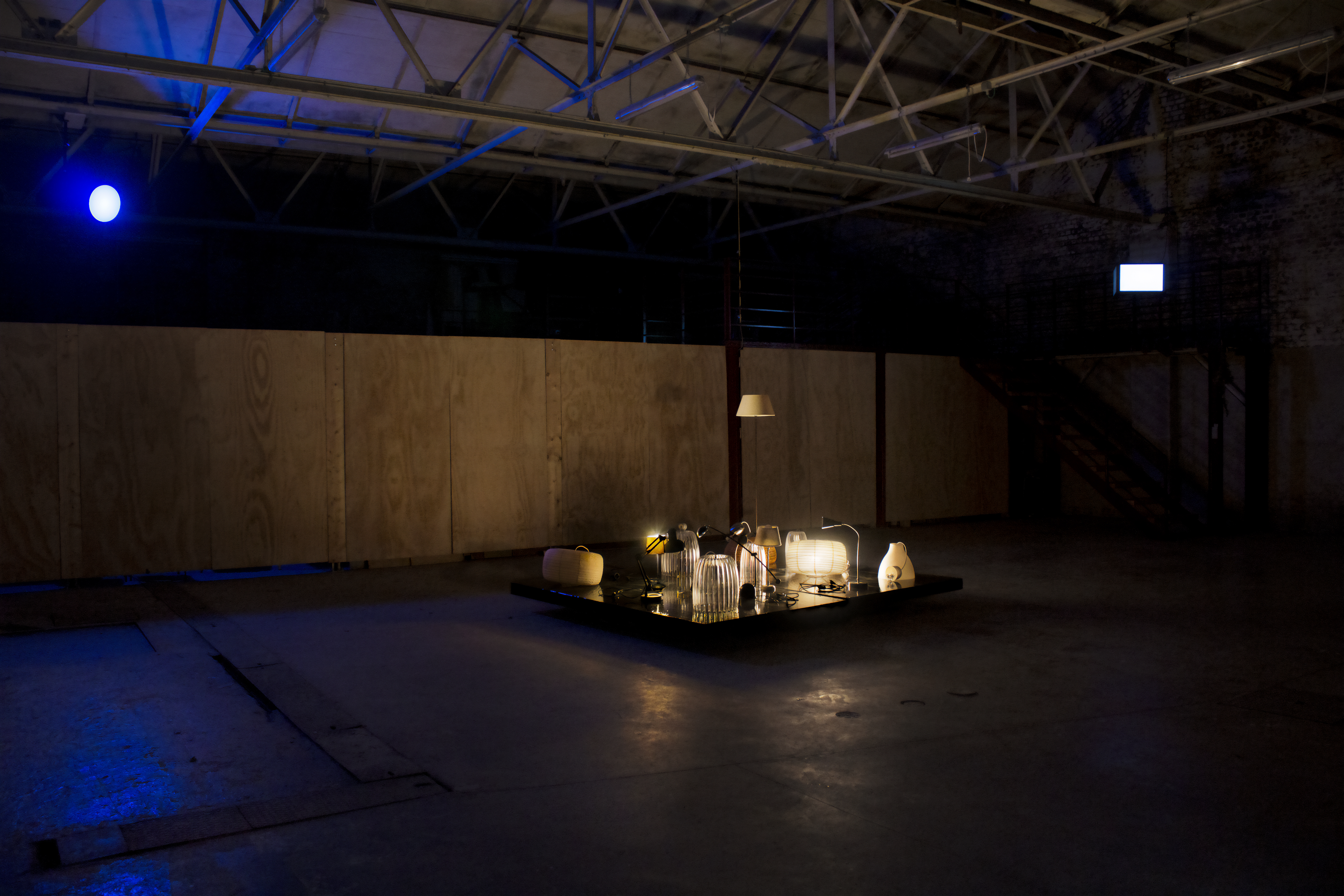
It’s all about trust, 2023
Exhibition view
De Verffabriek, Ghent, Belgium
The exhibition examines time, trust, causality, and the interpretation of phenomena beyond direct experience. At its core is the artist’s decision to transfer every light source from his home into the exhibition space, leaving his residence in complete darkness. This act serves as a conceptual anchor, inviting reflection on evidence, belief, and the limits of perception. Alongside this gesture, the exhibition explores how tools, instruments, and simulations expand our capacity to observe and understand, tracing connections between knowledge systems and techniques throughout history.
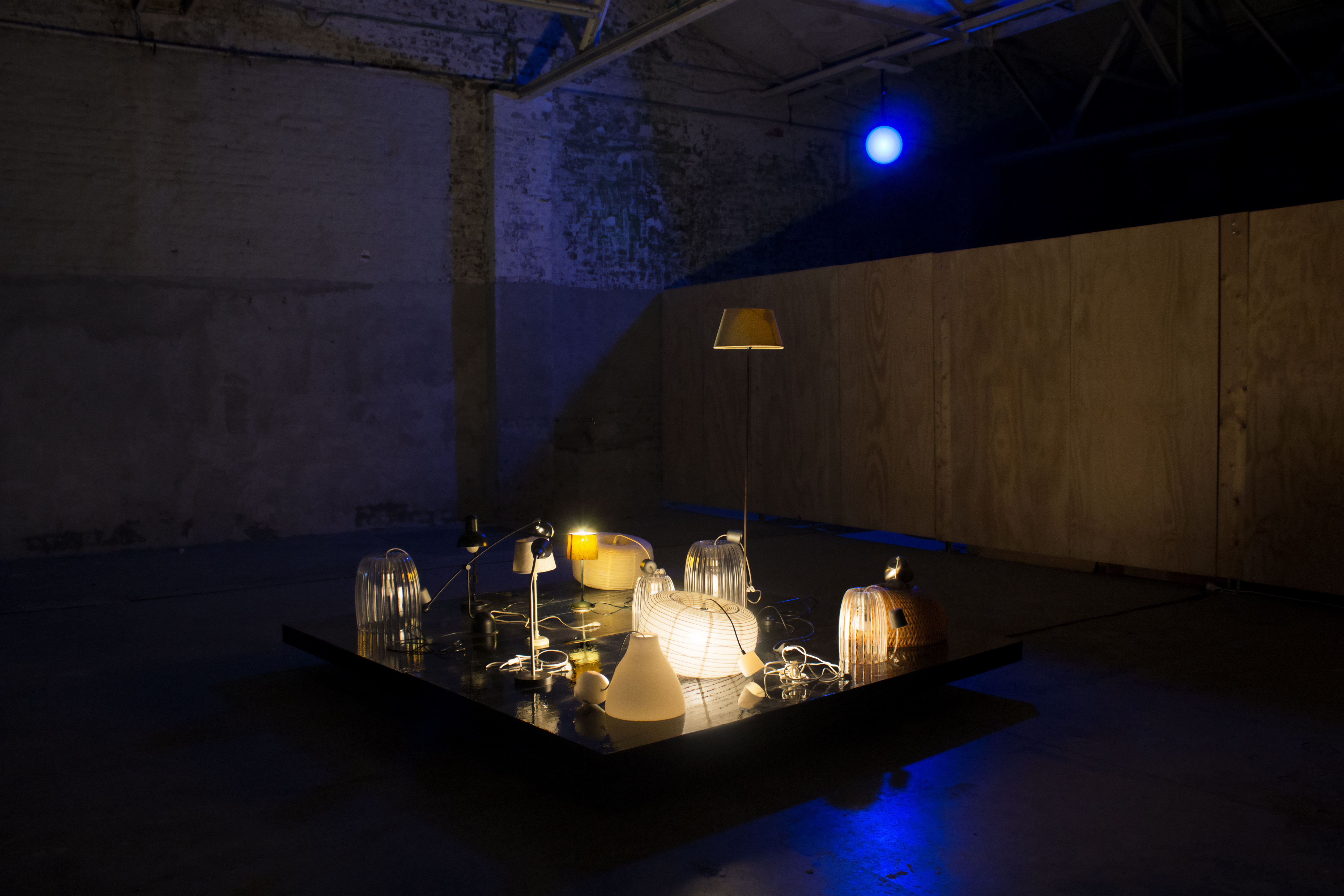
It’s all about trust, 2023
Exhibition view
De Verffabriek, Ghent, Belgium
Ceiling and floor lights, desk lamps, nightstand lamps, hallway and bathroom lighting,
all the artist’s home lighting has been relocated to the exhibition space, leaving his residence in complete darkness for the show’s duration.
Does their presence here confirm their absence there? Does the work serve as evidence of an unseen event beyond the space walls? If so, does the spectator become a witness? This piece relies on trust; the audience cannot verify the claim, only accept the artist’s account. If this premise is accepted, a further reflection could emerge.
If so, further questions arise: What does the artist’s home look like without light? Where would these lamps be if not here? Likewise, where else might I be if not in this space? These imagined scenarios remain speculative, known but never experienced. The cost the viewer pays to attend mirrors the cost the artist pays to present: inhabiting a darkened home for the duration of the exhibition. This piece is an act of reasoning, trust, and cost-sharing.
![]()
![]()
All the lights of my house, 2023
Does their presence here confirm their absence there? Does the work serve as evidence of an unseen event beyond the space walls? If so, does the spectator become a witness? This piece relies on trust; the audience cannot verify the claim, only accept the artist’s account. If this premise is accepted, a further reflection could emerge.
If so, further questions arise: What does the artist’s home look like without light? Where would these lamps be if not here? Likewise, where else might I be if not in this space? These imagined scenarios remain speculative, known but never experienced. The cost the viewer pays to attend mirrors the cost the artist pays to present: inhabiting a darkened home for the duration of the exhibition. This piece is an act of reasoning, trust, and cost-sharing.
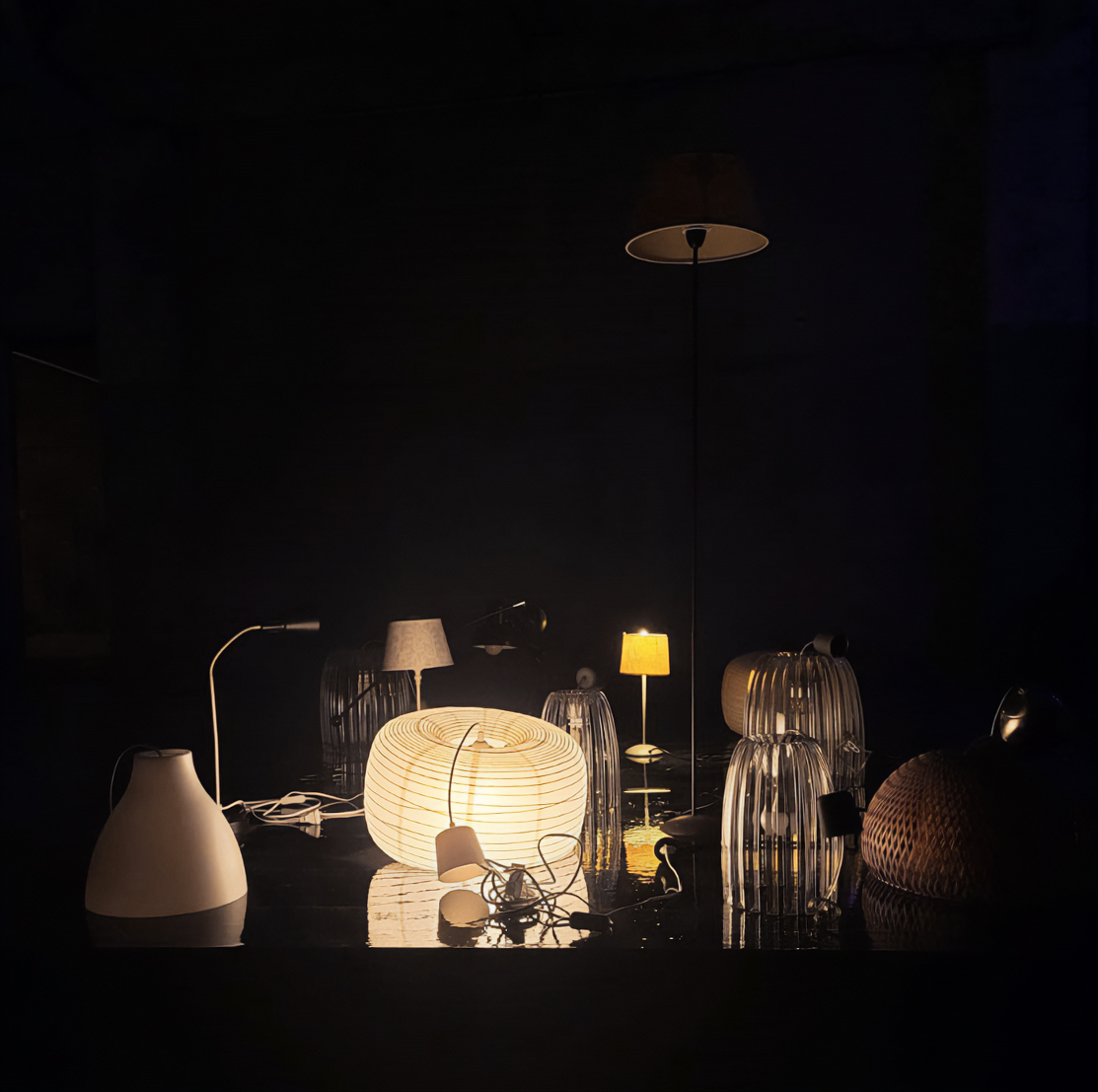
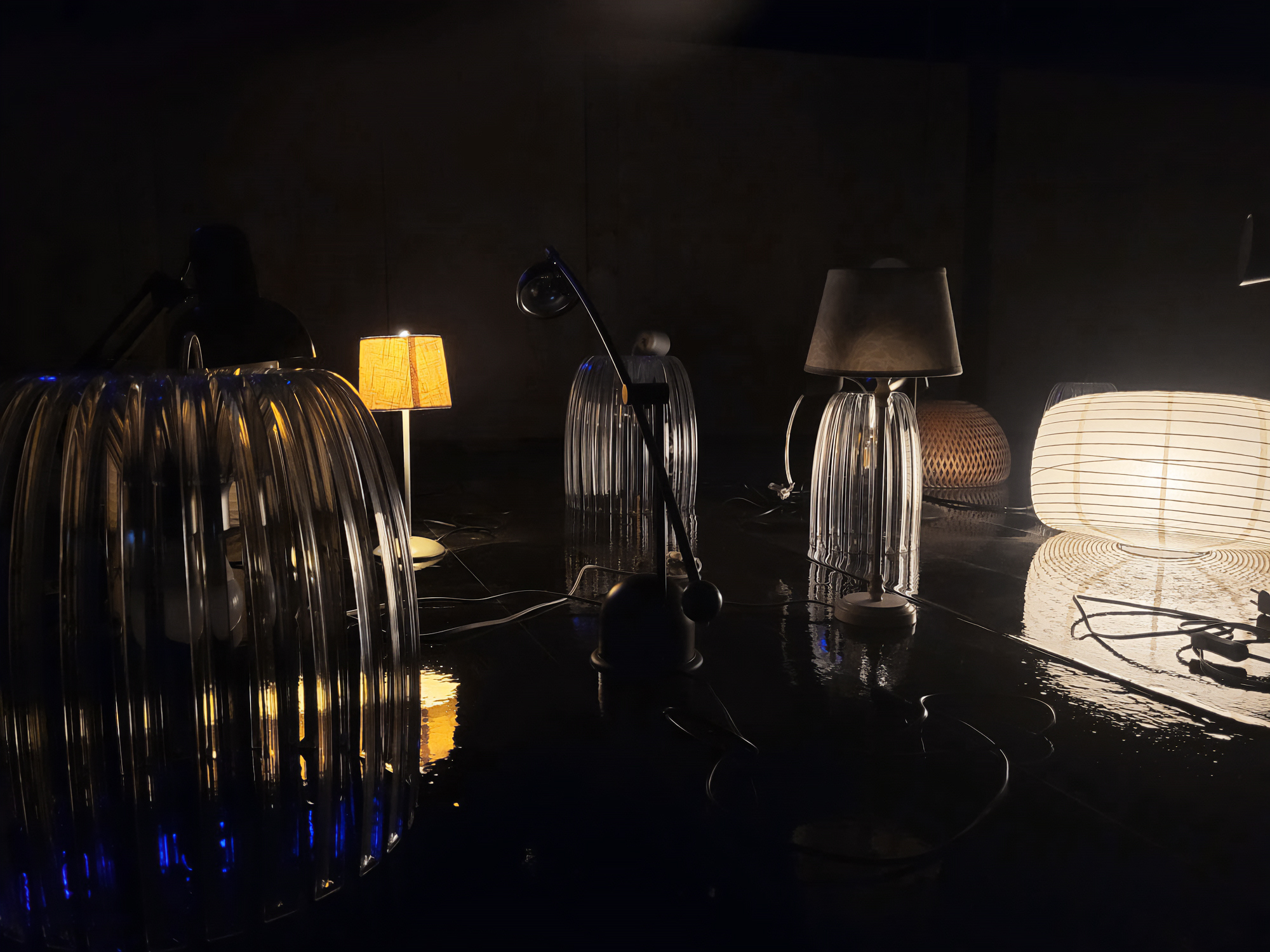
All the lights of my house, 2023
Domestic lights, vinyl, wooden platform
220 x 220 cm.
De Verffabriek, Ghent, Belgium
The exhibition also features a ceiling-mounted holographic fan that recreates the true color of a star as it would appear to the human eye in space.
The device displays a bright bluish disk, with its color derived from studies that analyze stellar spectra and translate this information into a representative hue, much like how our eyes perceive light through cone cells. Rapidly spinning RGB LEDs create the illusion of a continuously glowing star. Through simulations, models, and instruments, we extend our vision, study celestial bodies beyond our reach, and perceive scales that would otherwise remain inaccessible.
This levitating, rotating blue disk offers a glimpse of a star’s color as if seen directly, and at the same time functions as an allusion to something that exists independently and in the absence of any direct human observer.
![]()
Star (O6V), 2023
This levitating, rotating blue disk offers a glimpse of a star’s color as if seen directly, and at the same time functions as an allusion to something that exists independently and in the absence of any direct human observer.
The presented color is derived from the available database provided by Jan-Vincent Harre and Rene Heller, "Digital color codes of stars," Astronomical Notes, 2021.
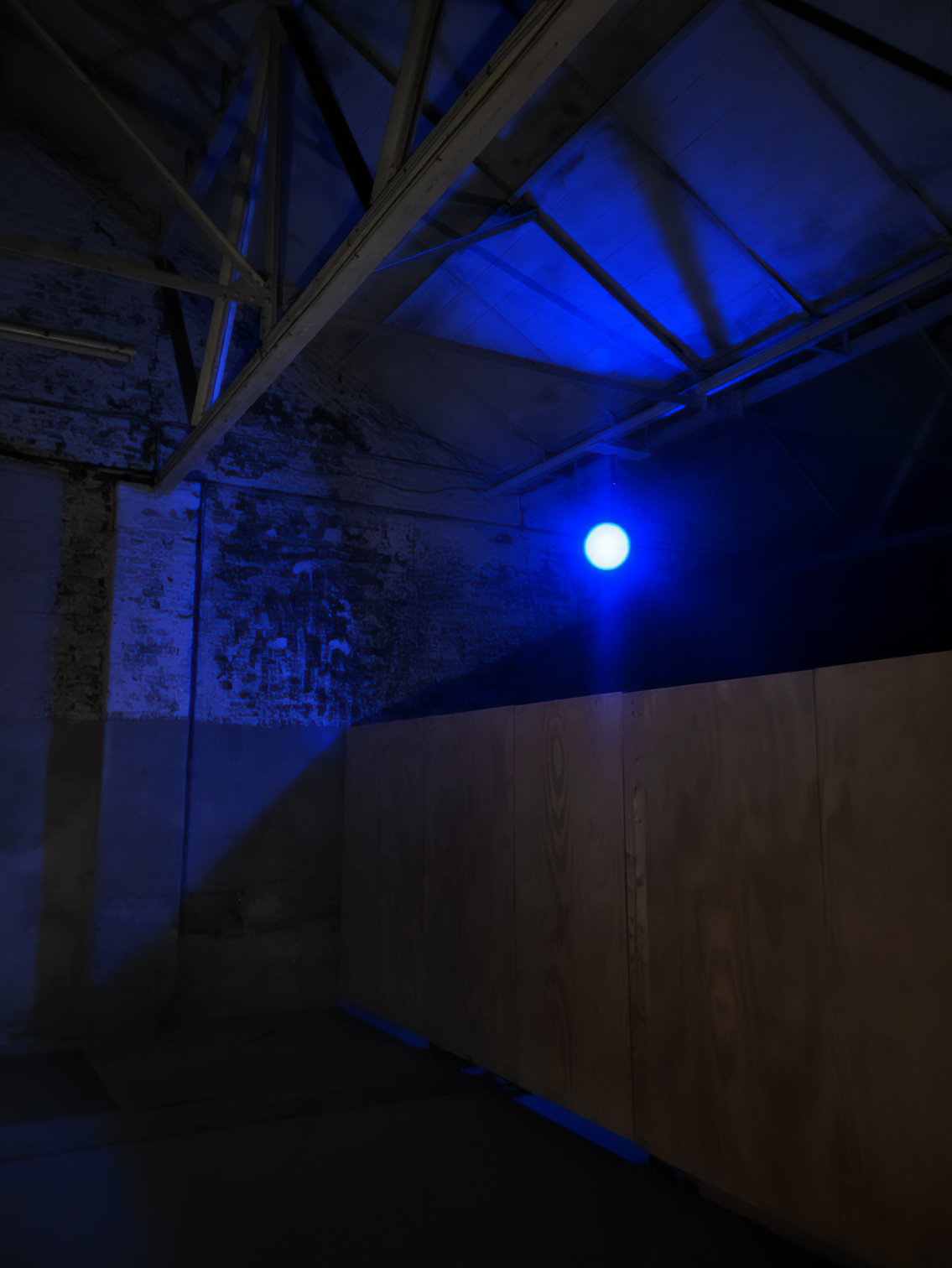
Star (O6V), 2023
Holographic fan, RGB color
60x5cm.
De Verffabriek, Ghent, Belgium
From time to time, whistling sounds echo through the space, accompanied by flickering light from two ceiling-mounted screens. The brightness of the light shifts in response to the intensity of each whistle.
These sounds come from a wooden whistle, crafted from a branch of a sweet chestnut tree that took root
outside the city
in the early 17th century. Its construction follows a simple method with origins tracing back to the Middle Iron Age.
This interplay of sound and light emerges from a fusion of elements, materials, and technologies, each rooted in different eras and regions, converging in a single moment.
![]()
Under the light of a Sweet Chestnut Tree, 2023
This interplay of sound and light emerges from a fusion of elements, materials, and technologies, each rooted in different eras and regions, converging in a single moment.
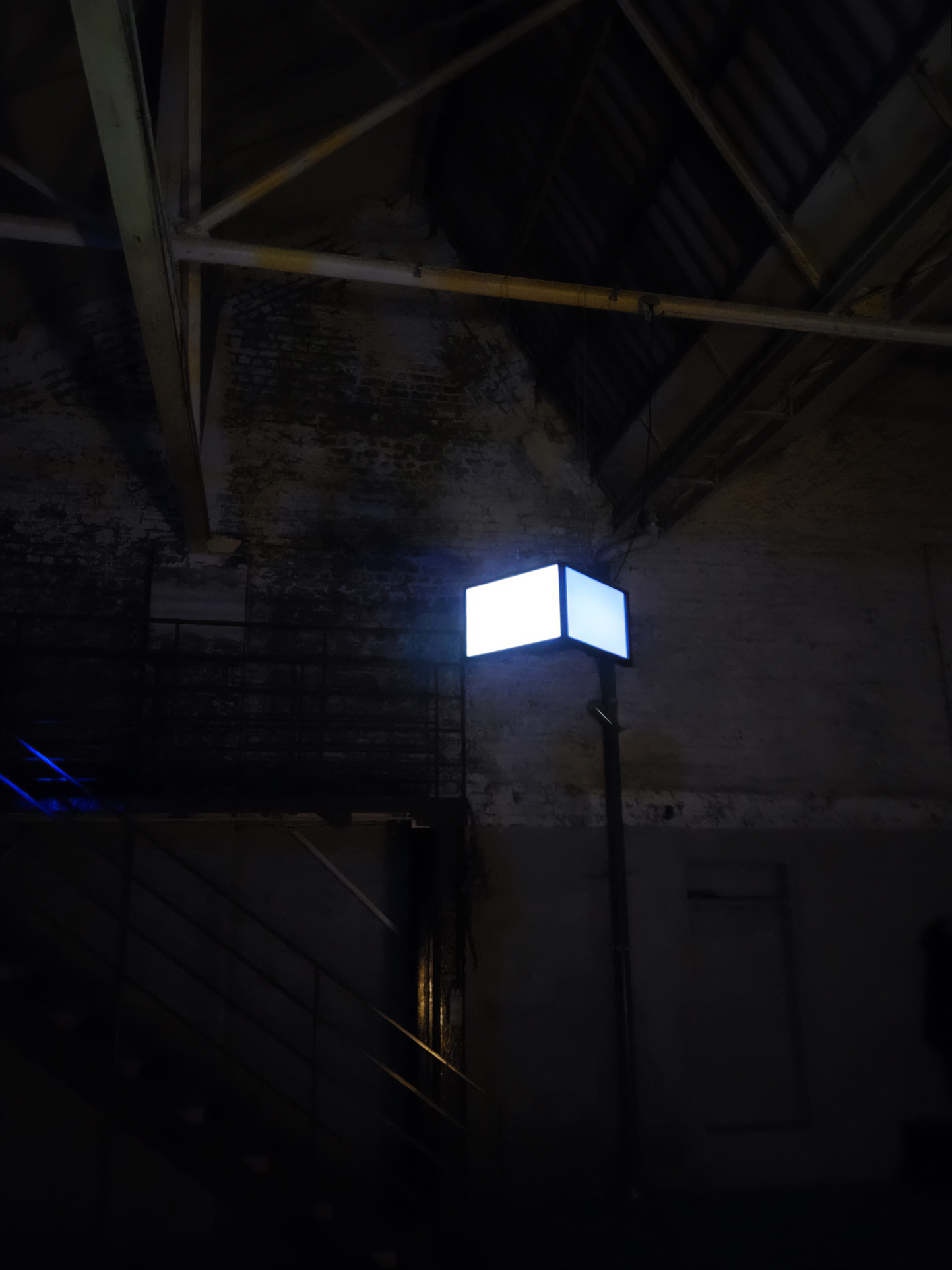
 Wooden whistle crafted from a branch of a Monumental sweet chestnut tree
Wooden whistle crafted from a branch of a Monumental sweet chestnut tree